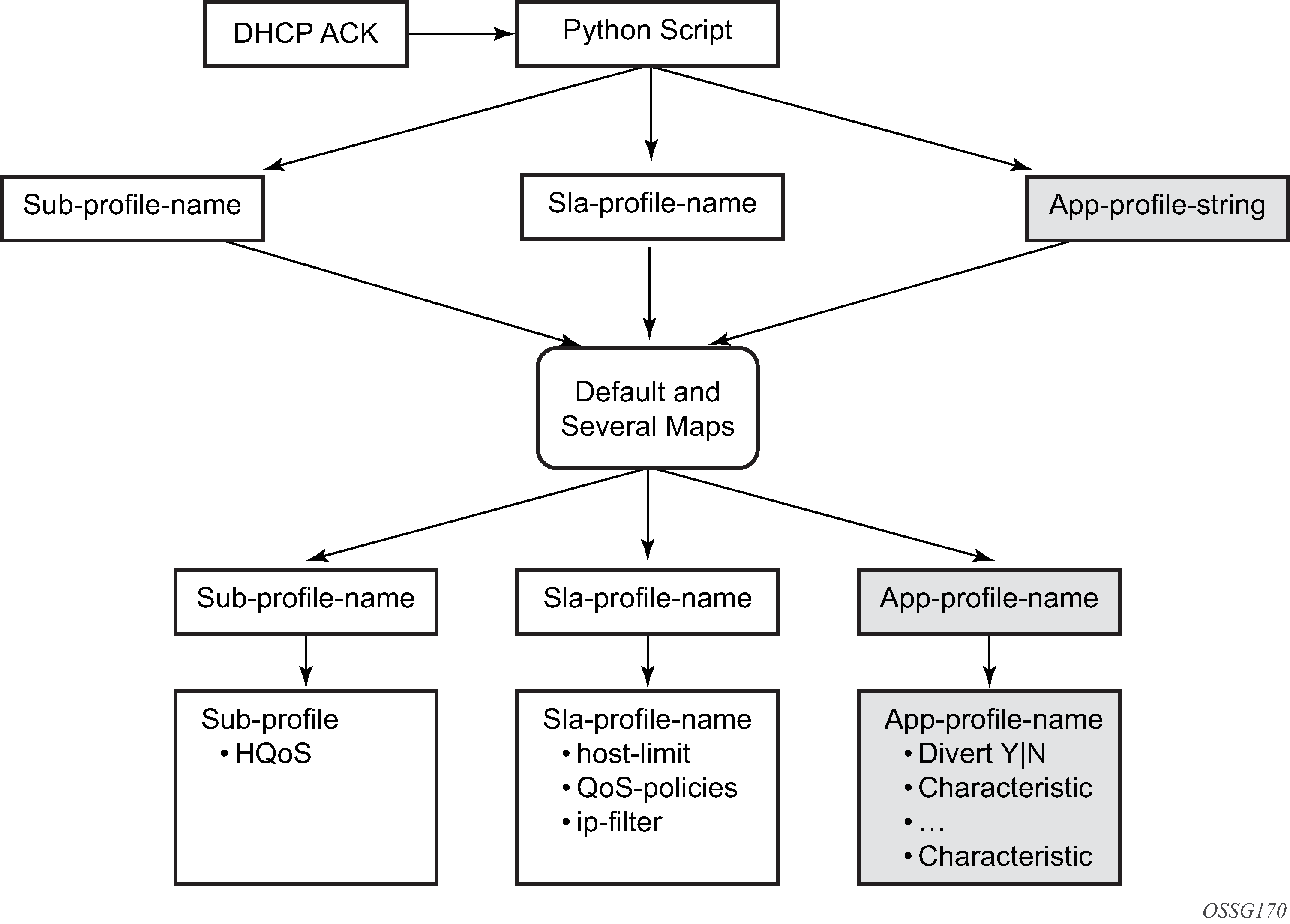Application profiles enable AA service for an ESM or DSM subscriber, Service Access Point or spoke SDP (AA subscriber). Each application profile is unique in the system and defines the AA service that the AA subscriber receives. An ESM subscriber can be assigned to an application profile which affects every host of the particular subscriber. For SAP or spoke SDP AA subscribers, an application profile can be assigned, which affects all traffic originated/destined over that SAP or spoke SDP. By default, ESM and DSM subscribers, SAPs or spoke SDPs are not assigned an application profile.
The following are main properties of application profiles:
-
One or more application profiles can be configured in the system.
-
Application profiles specify whether AA subscriber's traffic is to be diverted to AA.
-
Application profiles are defined by an operator that can reference the configured application service options (ASO) characteristics. See Application Service Options (ASOs).
-
Application profiles must only be assigned after AA resources (AA ISA cards) are configured.
-
Application profiles can be assigned a capacity cost used for subscriber load balancing among ISAs within the AA group (see ISA load balancing).
-
Application profiles can be assigned to a scope from a subscriber or session, which controls whether the application profile is applied to the entire subscriber or to a device.
ESM and DSM policy includes an application profile string. The string points to an application profile pre-provisioned within the router and is derived by:
-
parsing the DHCP Option 82 sub-option 1 circuit ID payload, vendor specific sub-option 9, or customer-defined option different from option 82, during authentication and the DHCPDISCOVER, as well as re-authentication and the subscriber’s DHCPREQUEST
-
RADIUS using a new VSA: [26-6527-45] Alc-App-Prof-Str
-
DIAMETER using ‟AA-profile-name” AVP under ADC rule
-
inheritance from defaults in the sap>sub-sla-mgmt context, to allow default application profile assignment if no application profile was provided
-
static configuration
Mid-session (PPP/DHCP) changes to the application profile string allows:
-
modification of the application profile a subscriber is mapped to and pushes the change into the network as opposed to waiting for the subscriber to re-authenticate to the network
-
change to the subscribers application profile inline, without a need for the subscriber to re-authenticate to RADIUS or perform any DHCP message exchange (renew or discover) to modify their IP information
Figure: Determining the subscriber profile, SLA profile and application profile of a host shows the process for determining the subscriber profile, SLA profile, and application profile of a host.
